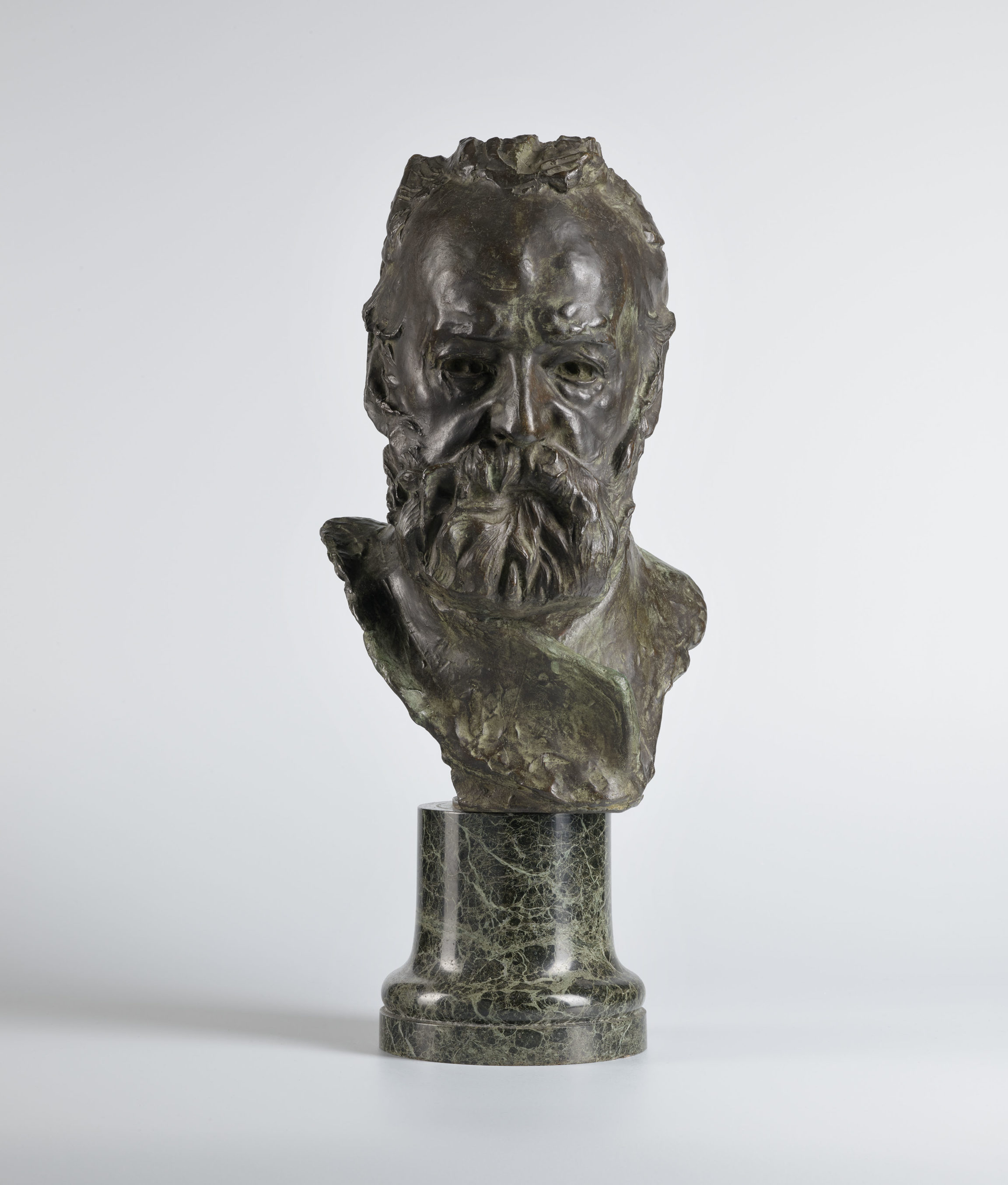Exposé actuellement
The CollectionBibliography
Martine Contensou, Claudie Judrin et alii, D’ombre et de marbre, Hugo face à Rodin, exh. cat. Paris, Maison de Victor Hugo, Paris, Paris musées, Paris, Somogy, 2003.
Erika Billeter, avec la collaboration de Chantal Michetti-Prod’Hom et Verena Villiger, Sculptures du Musée cantonal des Beaux-Arts Lausanne, Lausanne, Musée cantonal des Beaux-Arts, 1990, p. 48-49.




The journalist and art critic Edmond Bazire paid Auguste Rodin a visit late in the autumn of 1882. Rodin confided he was still wounded by accusations some years earlier that he had worked with casts from a live model for his 1877 Age of Bronze. Bazire advised him to clear his reputation by sculpting portraits of leading figures, introducing him early in 1883 to Victor Hugo, then at the height of his fame.
Hugo only sat gladly for photographers. He refused to pose for Rodin, no doubt remembering the thirty-eight torturous sessions it took to complete Victor Vilain’s mediocre bust. He did, however, agree to let Rodin study him as he went about his daily business. Rodin visited Hugo on many occasions in February, March, and possibly April 1883, producing a large number of roughs from life as the basis for the sculpture from his stool on the veranda. It was not an easy task: “Often, on the way, my impression faded, so that by the time I got back to my stool I dared not wield the shaping tool and I had to make up my mind to return to my model”.
Rodin made the best of the unusual situation. “I watched him in full conscience. And that is how I managed to capture the genuine Hugo”. Rodin wanted a resemblance that was more than merely outward in appearance: it had to encapsulate the author’s soul, reflected in his expressive features. Hugo’s genius radiates from the intensity of his gaze and the finesse of the details. The bust, presented at the 1884 Salon, was much admired for its moral and physical resemblance, its deep sense of truth, and its rich sense of inner life.